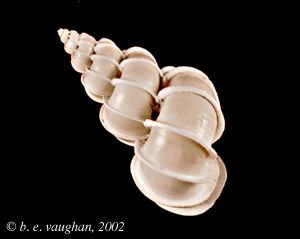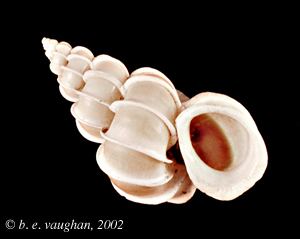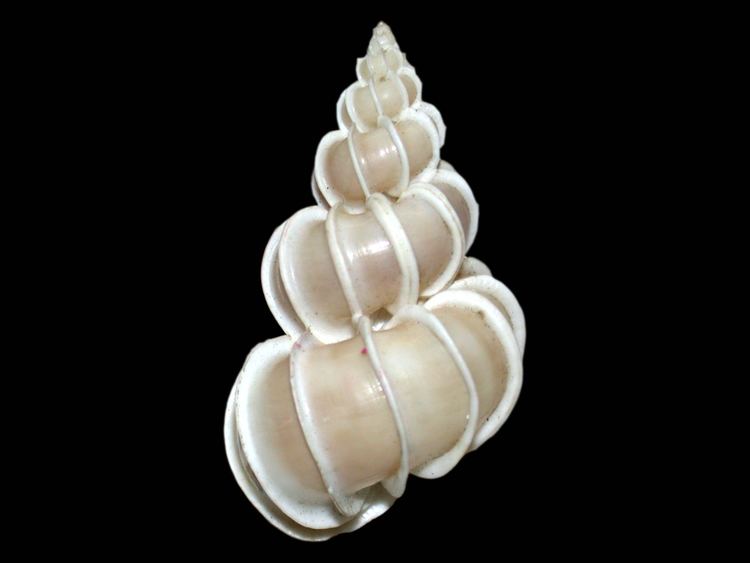Scientific name Epitoniidae | Rank Family | |
Family Epitoniidae; Berry, 1910 (1812) | ||
Wentletrap shelling
Wentletraps are small, often white, very high-spired, predatory or ectoparasitic sea snails, marine gastropod mollusks in the family Epitoniidae.
Contents
- Wentletrap shelling
- Most gorgeous spillage by the wentletraps
- Distribution
- Shell description
- Ecology
- Genera
- References

The word wentletrap originated in Dutch (wenteltrap), and it means spiral staircase. These snails are sometimes also called "staircase shells", and "ladder shells".

The Epitoniidae family belongs to the superfamily Epitonioidea, which also includes the Janthinidae (the pelagic purple snails) and the family Nystiellidae, all part of the informal group Ptenoglossa. Epitoniidae is a rather large family, with an estimated number of species about 630.

Most gorgeous spillage by the wentletraps
Distribution
Wentletraps inhabit all seas and oceans worldwide, from the tropical zones to the Arctic and Antarctic zones.
Shell description
Most species of wentletrap are white, and have a porcelain-like appearance. They are notable for their intricately geometric shell architecture, and the shells of the larger species are prized by collectors.
The more or less turret-shaped shell consists of tightly-wound (sometimes loosely coiled), convex whorls, which create a high, conical spiral. Fine or microscopic spiral sculpture (also called "striae") is present in many species. The shells sometimes feature an umbilicus. Wentletrap shells have a roundish or oval aperture, but its inner lip is often reduced to strip of callus. The round and horny operculum is paucispiral and fits the aperture tightly. Most of the species in the family are small to minute, although some are larger, and overall the adult shell length in the family varies between 0.6 and 11.7 cm.
Within the genus Epitonium, the type genus of the family, the shell has predominantly axial sculpture of high, sharply ribbed "costae". These costae may offer some protection against other predatory snails, which would find it difficult or impossible to bore a hole in a shell with such obstructions.
Ecology
Wentletraps are usually found on sandy bottoms near sea anemones or corals, which serve as a food source for them. Some species are foragers and search for anemones.
Little is known about the biology of most wentletraps. Many wentletraps reveal a hint of purple body color, suggestive of carnivorous feeding (Keen, 1958). The animal can exude through its salivary gland a pink or purplish dye that may have an anaesthetic effect on its prey.
Keen also cited direct observation of a wentletrap feeding by insertion of its proboscis into a sea anemone. A sequence of a wentletrap feeding on an anemone has been published. These snails also prey on corals and other coelenterates.
Female wentletraps lay egg capsules that are bound together with a supple string. The young emerge from these capsules as free-swimming larvae.
Genera
Genera within the family Epitoniidae include:
